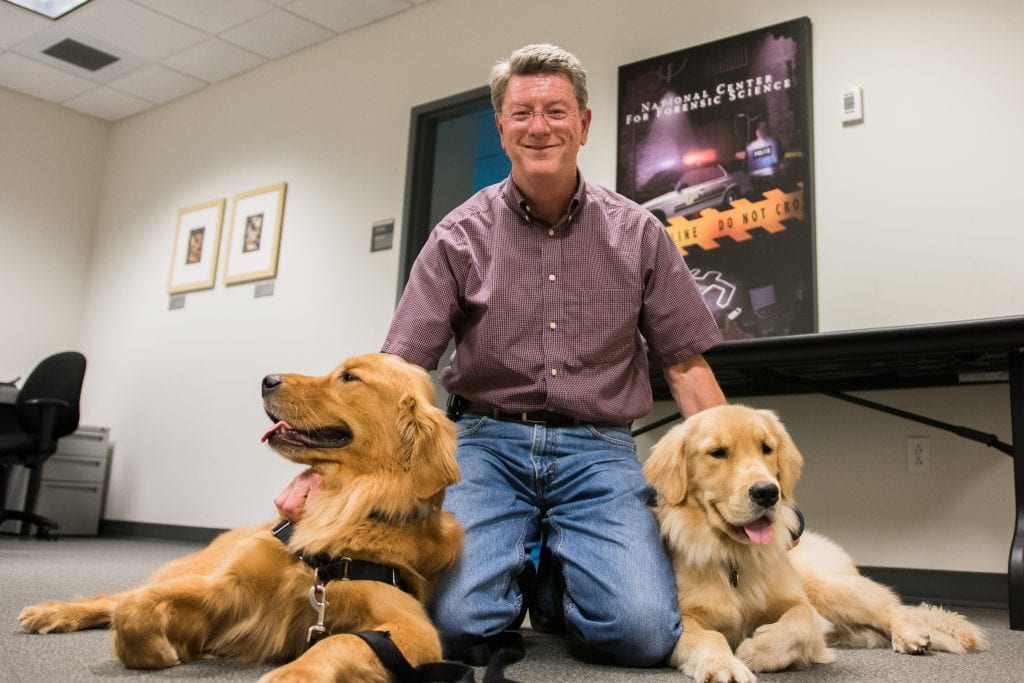Director’s Therapy Dogs Provide Comfort In Trying Times

Buddy and Nugget shed more love than hair — and if you’ve seen the back of their ride you know that’s saying something.
The owner of these two rambunctious Golden Retrievers would be happy to keep all that love to himself. But Michael Sigman, Ph.D., director of the National Center for Forensic Science, has other plans.
Sigman was introduced to therapy dogs when he took the first of his dogs, Buddy, to obedience training. The trainer mentioned that in addition to obedience and agility, he could qualify Buddy to work with people who need a little extra comfort.
 Unlike service dogs, which help people with disabilities like blindness or frequent seizures, therapy dogs are trained to be still and provide a calming presence. You can find them in courtrooms helping children testify about traumatic experiences; soothing victims after a mass shooting; or, in the case of Buddy and Nugget, walking the hallways of elder care facilities and making the rounds with students during finals week.
Unlike service dogs, which help people with disabilities like blindness or frequent seizures, therapy dogs are trained to be still and provide a calming presence. You can find them in courtrooms helping children testify about traumatic experiences; soothing victims after a mass shooting; or, in the case of Buddy and Nugget, walking the hallways of elder care facilities and making the rounds with students during finals week.
In the instance of elder care, Sigman said the dogs are particularly powerful for people living with dementia. The dogs take them back to the past, especially if they had pets.
“They can’t always express what they’re feeling, but you can see in their face it’s a good experience for them,” Sigman said.
Multiple scientific studies validate and quantify the good feeling that comes with snuggling with pets. Washington State University found in 2019 that just 10 minutes of play time lowered cortisol levels (your stress hormone) for a full day.
That goodwill is a two-way street. Sigman feels just as rewarded sharing his dogs with people who need them most.
“Getting to share the dogs is really important to me,” Sigman said.
